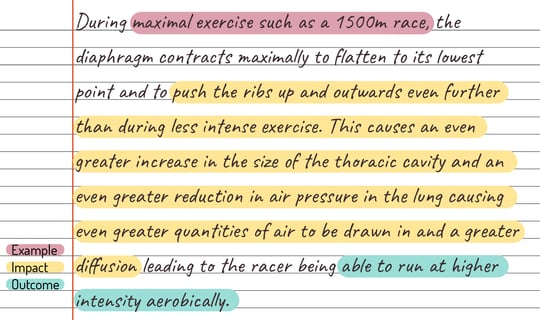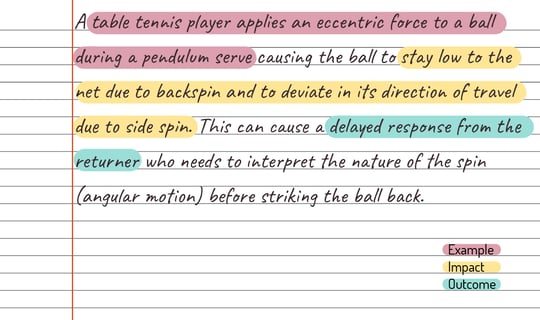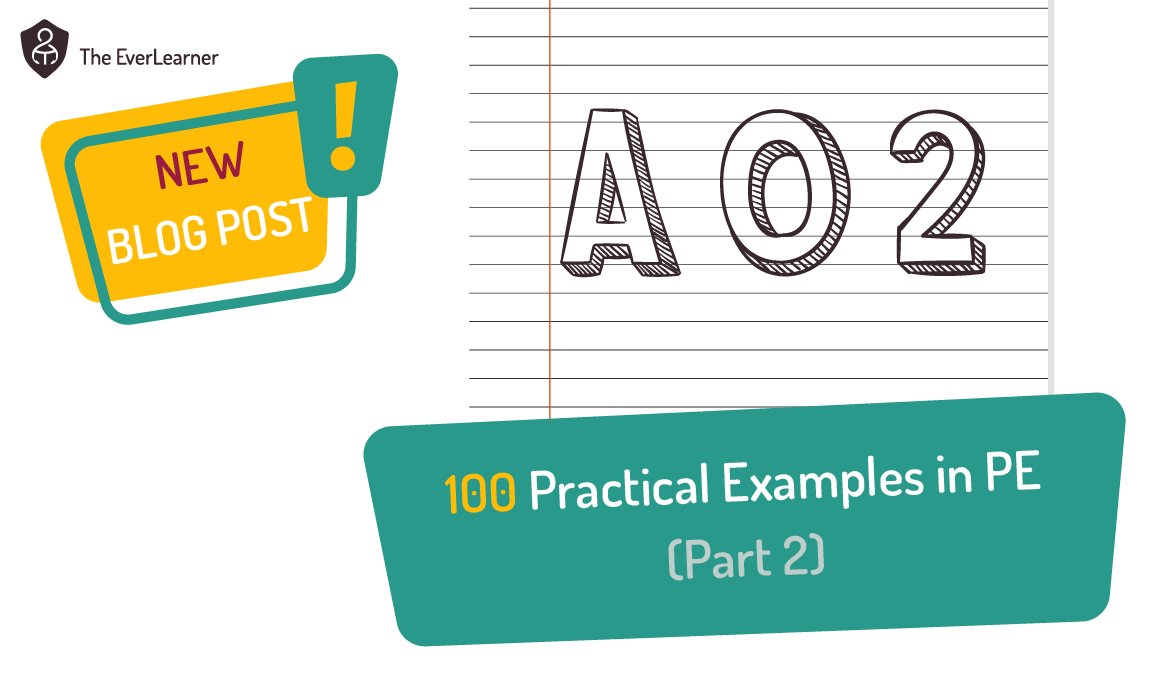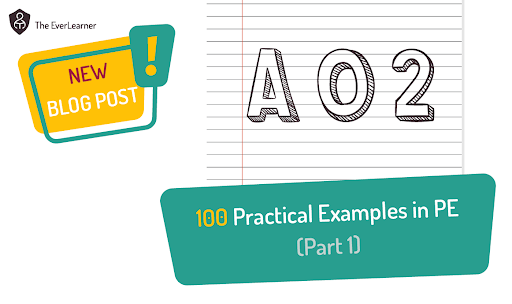Welcome to part 3 of this blog post series focused on (AO2) practical examples in PE exam answers. This week’s post includes 12 well-developed practical examples starting with the letters G, H and I. This post is a follow-up to 100 Practical Examples in PE (Part 1) and 100 Practical Examples in PE (Part 2), which were posted in 2022 covering (AO2) examples starting with A, B, C, D, E and F.
My aim with this post is to set a standard for how examples are written in PE exams but also to support teachers in providing the best explanations of theories and concepts through examples during their teaching.
I advocate for the E-I-O method of making examples and you can read the details of this model below. But the EIO model is only the beginning of this conversation. I also want to state, categorically, that I believe in achieving 100% of classroom-based learning through application. To be clear, I see no reason why concepts without application need to be delivered to PE students. When you or I teach a PE lesson, every idea that we teach can be delivered through application. Whether we are defining a component of fitness, describing a process of energy transfer or teaching about the impact of gender on participation, our teaching can be applied from the very outset. I encourage PE teachers to go back to their PowerPoint slides and worksheets and consider whether what is there can be adapted.
Do you have slides with pure theory, definitions or descriptions on them? If so, why?
Look at the first slide that you present on any particular topic or at the very start of your worksheet.
Does it start with applied knowledge and understanding? If not, why not?
What I am suggesting is that we all challenge assumed teacher behaviours with logical questioning about why we do what we do. In teaching, we often talk about being a reflective practitioner but do we actually implement what we reflect on? I think we need to.
Now, here is the E-I-O method itself:

Using two of the examples from this post, we can emphasise E-I-O:

Or…

In each of the two examples above, it is clear that the learner is explicitly applying their example to the impact on that performance and the outcome of that performance.
As a word of caution, I want to remind readers that some examples will only have either impact or outcome or, more precisely, the impact and the outcome will be the same thing.
G
Gamesmanship
A tennis player displays gamesmanship when she delays her opponent’s serve by holding her hand out and adjusting her shirt. This can cause her opponent to lose concentration and rhythm which could lead to a double fault or poor serve.
G
Gravity (effect of)
A javelin in flight is exposed to the gravitational force. The force experienced by the javelin is a product of the javelin’s mass of 800g (for men) multiplied by acceleration caused by the gravitational force of 10ms2 causing a downwards force of 8,000N.
G
Gross skills
A clear-out at a ruck is considered a gross skill because it features powerful contractions of large muscle groups (such as the quadriceps and pectorals) in order to apply enough force to move the opponent away from the ball and retain possession.
G
Gender (influence of)
On average, females are less physically active than males between the ages of 18 and 40 partly because females on average tend to perform more domestic and parental roles as well as working. This leads to less availability of leisure time when exercise is possible.
H
Hamstring contraction
A 100m sprinter requires powerful concentric contractions of the hamstrings group in order for the leg to recover back into the drive position and apply force to the ground again sooner. This propels the runner forward faster.
H
Health
An individual with high levels of physical, emotional and social well-being can be considered healthy. This person is not healthy simply because they are not ill but because their holistic well-being is good.
H
Homefield advantage
Liverpool Football Club experiences more success when playing in their home stadium due to the opposition team experiencing unusually high levels of arousal leading to coordination errors. This provides Liverpool with a greater chance of winning home matches than away matches.
H
Hypertension
A 46-year-old website designer who lives a sedentary lifestyle might experience chronic high blood pressure (hypertension), which can cause them to have restricted blood flow to the muscles when exercising and, therefore, less capacity of aerobic respiration to release energy in the presence of oxygen.
I
Isometric contraction
Downhill skiing involves an isometric contraction at both the hamstrings and quadriceps groups as, in order to hold the tuck position, both muscle groups remain at the same length whilst under tension.
I
Iliopsoas
During the execution of a rugby conversion, the iliopsoas contracts and shortens (concentric contraction) causing the hip to flex and move the leg to the ball and strike it towards the post.
I
Input
A cricket slip fielder receives the input of the angle, speed and trajectory of the ball after it is edged and receives this data via their eyes before selectively attending to this information and focussing on this input alone.
I
Intrinsic motivation
A regular gym-goer experiences the feel-good factor after each session due to the release of hormones such as serotonin, which drives them to want to train again in the future.



%20Text%20(Violet).png)

